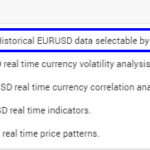This report explains the exchange rate information mandated under Section 613 of Public Law 87-195, issued September 4, 1961. This law (22 USC 2363 (b)) grants the Secretary of the Treasury the authority to set exchange rates for all foreign currencies or credits reported by government agencies.
The main goal is to standardize foreign currency reporting across all US government agencies. By using consistent exchange rates, the Treasury ensures uniformity in agency reports concerning foreign currency amounts and their U.S. dollar equivalents. This standardization is crucial for accurately tracking and managing government finances across international transactions.
This report encompasses all foreign currencies relevant to U.S. government interests. This includes a wide array of financial activities:
- Receipts and disbursements in foreign currencies.
- Revenues and expenditures accrued in foreign currencies.
- Authorizations involving foreign currencies.
- Obligations in foreign currencies.
- Receivables and payables denominated in foreign currencies.
- Refunds processed in foreign currencies.
- Similar reverse transactions that involve foreign currencies.
However, there are specific exceptions where these reporting exchange rates do not apply. These exceptions are outlined below:
- Collections and refunds that must be valued using rates specified in international agreements.
- Conversions between different foreign currencies.
- Sales of foreign currencies in exchange for U.S. dollars.
- Other transactions that directly affect dollar appropriations. (For detailed information, refer to Volume I Treasury Financial Manual 2-3200).
This report is released quarterly and presents the exchange rates at which the U.S. government can obtain foreign currencies for official spending. These rates are reported by disbursing officers from each post and are recorded on the last business day of the month preceding the report’s publication.
To maintain accuracy and reflect market changes, the Treasury will amend this quarterly report if current exchange rates deviate by 10% or more from the published rates. Starting in April 2021, any amendment to a currency exchange rate within a quarter will be shown as a separate entry with a new effective date. Amendments issued at the end of a month are applicable for reporting transactions in the remaining month(s) of that quarter.
For example, if a currency rate is amended on April 30th, the report will feature two lines for that currency. The first line will show the original rate published on March 31st, and the second line will display the amended rate effective from April 30th. This amended rate will then be used for reporting purposes for transactions occurring in May and June. Amendments will also be issued when new foreign currencies become relevant to U.S. government operations.
For consistent reporting across the board, all U.S. government agencies are required to use these published exchange rates—except in the specific cases mentioned earlier—to convert foreign currency balances and reported transactions into U.S. dollar equivalents. This conversion should be done as of the date of this report and for the subsequent three-month period.
It is crucial to understand that the exchange rates provided in this report are not current market exchange rates. Therefore, they should not be used for valuing transactions that directly impact dollar appropriations. For up-to-date market rates, especially if you are looking for the Current Dollar To Euro Exchange Rate for non-governmental transactions, you should consult financial data providers or currency converter tools that reflect real-time market fluctuations. This report serves a specific purpose for government financial reporting and is distinct from the dynamic rates you might find on currency exchange platforms.

